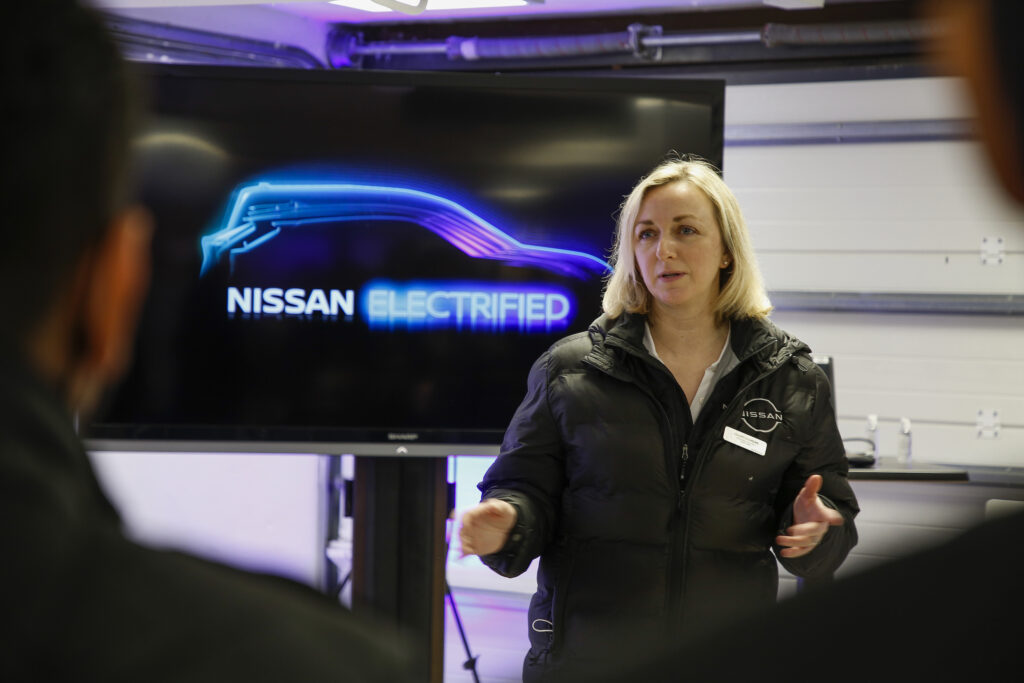Nissan will bypass PHEV phase with e-Power hybrid tech
Plug-in hybrids will not be part of Nissan’s pathway to an electric-only future. The company will rely instead on its new e-Power hybrid system to serve as a stepping stone between the ICE age and the EV era.
What makes e-Power different from other high-voltage full-hybrid systems is that it’s 100 percent electric drive 100 percent of the time. All the others on the market today, including those from Toyota can, and frequently do, blend ICE and e-motor power.
EV TECHNOLOGY: Nissan e-Power hybrid tech explained
READ MORE: Nissan e-Power locked in for Australia in 2022, Qashqai likely
READ MORE: Nissan Patrol to shun hydrogen, focus on e-Power hybid
READ MORE: Nissan’s global EV ramp up leaving Australia behind, Ariya now 2023
READ MORE: Nissan to replace Micra mini car with all-new EV

Australia will get its first taste of e-Power in the new Qashqai. It’s due to arrive later this year, after the mild-hybrid variants. While the Qashqai e-Power will be front-drive only, the larger X-Trail e-Power that’s next in line for the tech will be also offered with the dual-motor e-4orce all-wheel drive system that Nissan will also use in EVs like the Ariya.

Nissan claims e-Power will deliver better fuel efficiency than other hybrids. “We are 10 percent less than the hybrid competitors we have in terms of CO2,” says Cliodhna Lyons, the company’s advanced planning manager for Africa, the Middle East, India, Europe and Oceania.
“We believe that e-Power is actually going to play the role to bring our customers on the journey into a BEV future,” she says. “We believe it’s enough.”

Most other car makers see PHEV as the key transition technology between ICE and EV, but not Nissan. “At the moment our position is that we don’t want to go down that route,” says Lyons. In passenger cars at least, she adds.
Nissan will strive to ensure people understand what e-Power isn’t. “We don’t describe this as an electric vehicle. This is not a zero-emissions technology. We’re quite clear on that.”
The technology is already well proven. “We’ve sold over half a million e-Powers in Japan,” Lyons says. Introduced in the Nissan Note in 2016 as an option, the latest generation of the mini-MPV is now produced only with e-Power.

For the tougher demands of Europeans – more high-speed motorway driving and longer climbs – e-Power had to be beefed up for the new Qashqai and X-Trail with a larger ICE and more powerful motors.
What e-Power offers, she says, is the flavour of electric driving but without any worries about range or recharging. “Our customers won’t need to worry about all of that, and yet they get to start enjoying that EV feel.”
“We know from Leaf 98 percent of our customers will not go to an ICE car again. So e-Power allows us to offer all of that enjoyment, but at this moment in time, where people are still concerned about the barriers, we remove the barriers.”
“This is a unique technology to Nissan, and what we believe the benefit to the customer is is the driving experience,” says Lyons.
Matthew Wright, the executive in charge of powertrain development for Nissan in Europe, expands on the theme. “You’ve got a slight benefit on efficiency,” he begins.

“But I think that driving benefit you get – that instantaneous response and linear acceleration through the range – I think gives a real benefit over the Toyotas.” And e-Power sounds “more natural” than a Toyota hybrid, too, he adds.
Wright confirms that e-Power motors for the Qashqai and X-Trail are basically identical to those used in Nissan’s EVs. He also reveals that the X-Trail e-Power will use the same turbocharged 1.5-litre three-cylinder ICE as in the Qashqai.
This engine is basically three-quarters of the innovative variable compression ratio 2.0-litre used by Infiniti, Nissan’s luxury brand.
Because e-Power is a scalable technology, there’s no reason it couldn’t power the heavyweights in Nissan’s line-up. Even the Patrol?
“It could be a solution,” says Wright. He estimates that an e-Power version of Nissan’s long-lived 4WD would be more fuel efficient – about 30 percent better in urban driving, around 15 to 20 percent better on the open road – and more capable in slippery off-road conditions.




